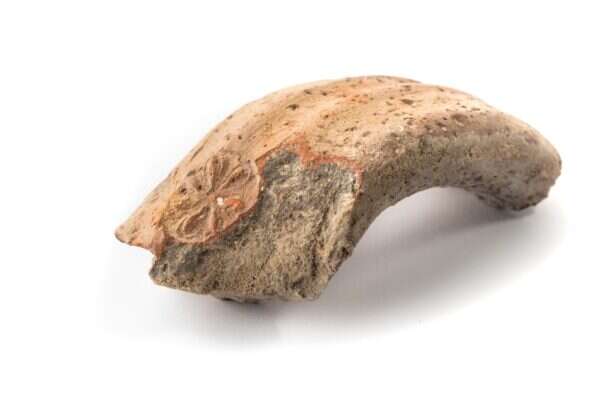Archaeological excavations at the City of David National Park in the Old City of Jerusalem have excavated the remains of an Iron Age city wall constructed in the First Temple era that was designed to protect Jerusalem against attacks from the east, the Israel Antiquities Authority reported Tuesday.
Follow Israel Hayom on Facebook and Twitter
The IAA is conducting the dig in collaboration with the City of David Foundation, as part of the park development process.
Excavation directors Dr. Filip Vukosavović of the Ancient Jerusalem Research Center and Dr. Joe Uziel and Ortal Chalaf on behalf of the Israel Antiquities Authority, the city wall just unearthed protected Jerusalem from "a number of attacks during the reign of the kings of Judah, until the arrival of the Babylonians, who managed to break through it and conquer the city.
"The remains of the ruins can be seen in the archaeological excavations. However, not everything was destroyed, and parts of the walls, which stood and protected the city for decades and more, remain standing to this day," the archaeologists said.
The newly-excavated section of the wall connects two previously excavated segments on the eastern slope. In the 1960s, British archaeologist Kathleen Kenyon uncovered a section of the wall at the northern part of the slope and dated it to the days of the Kingdom of Judah.
About a decade later, archaeologist Yigal Shiloh dug out a long section of the wall in excavations at the southern part of the slope. Over the years, doubts have been raised that these stone edifices might not be remains of the First Temple-era city wall. However, the new section appears to prove that the remains were all parts of the wall that once defended ancient Jerusalem.
Reconstruction of the sections unearthed in early 20th-century excavations have allowed researchers to trace nearly 30 meters (98 feet) of the surviving wall to a height of 2.5 meters (eight feet) and a width of up to five meters (16.4 feet).
In 2 Kings, 25:10, the Bible describes the Babylonian conquest of the city thus: "The whole Babylonian army under the commander of the imperial guard broke down the walls around Jerusalem."

But it appears that the eastern part of the wall withstood the Babylonian attack, possibly due to the precipitous nature of the eastern slope of the City of David, which slopes towards the Kidron Valley at an angle of over 30 degrees.
Evidence of the Babylonian destruction can be seen in a building that stood next to the wall, which contained rows of storage jars that were smashed when the building burned and collapsed. The jars' handles were stamped with rosettes, a symbol associated with the Kingdom of Judah. A Babylonian stone seal was discovered that bore the symbols of two Babylonian gods, Marduk and Nabu. Nearby archaeologists found a bulla (a stamp seal impression made in clay) that was inscribed with the Judaean name "Tsafan."
The latest finds from the ongoing excavation are scheduled to be presented in October at the Israel Antiquities Authority's conference "New Studies in the Archaeology of Jerusalem and its Region."
Subscribe to Israel Hayom's daily newsletter and never miss our top stories!




